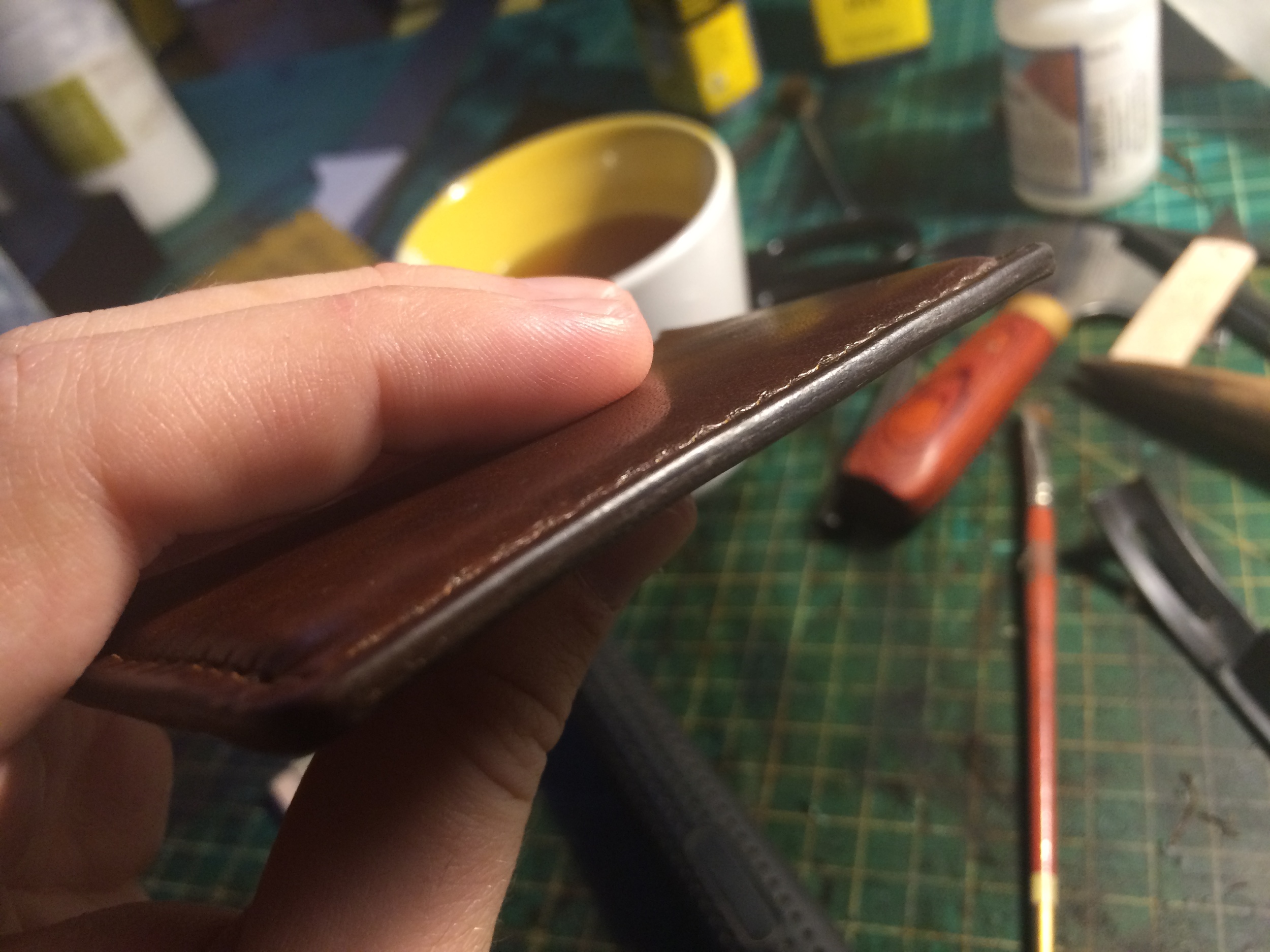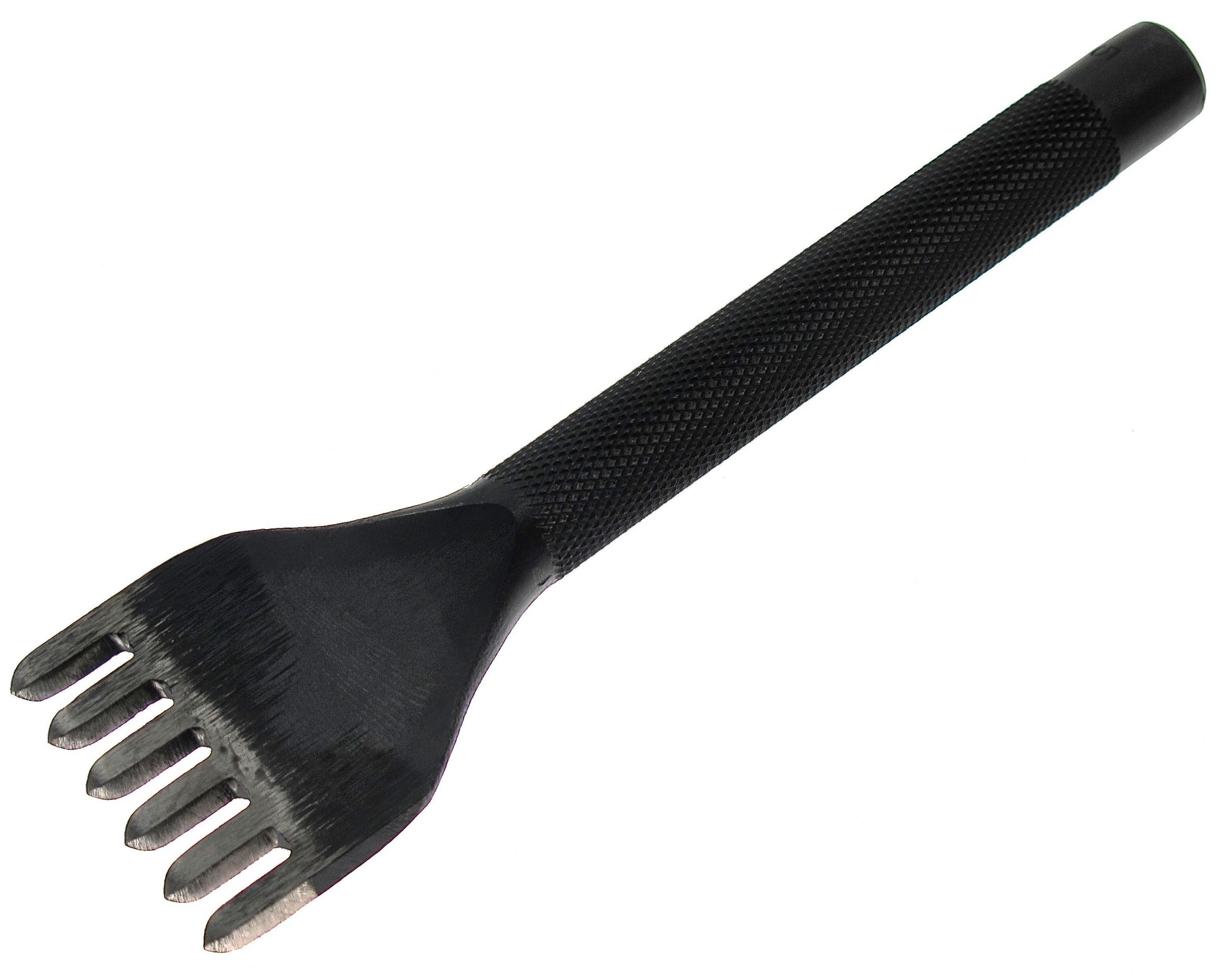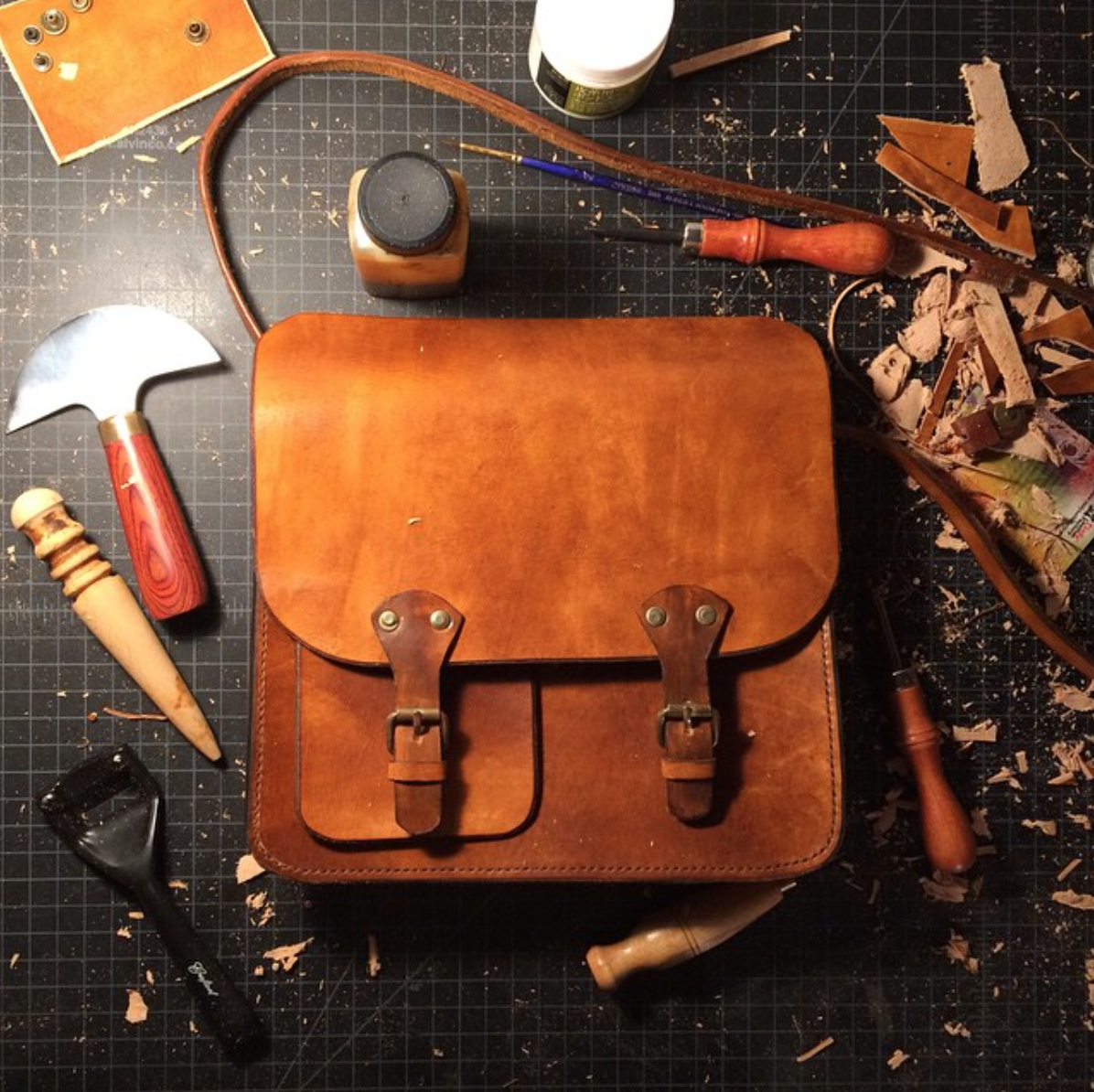There are literally hundreds of ways to clean up the edges of your leatherworking projects. And most established leatherworkers have their own unique way to do their edges. Some spend a really long time getting a nice glossy and smooth finish, others prefer a more matte look that usually comes with using some sort of heating and edge paint, while others just keep them the way they are for a rugged look (I generally steer people away from unfinished edges, while some like the look, those edges will quickly fray). To find what you like, I really encourage you to do some google/instagram searching on different leatherworkers' shops and find a product you like. A lot of leatherworkers have posted guides on how they do their edges, and if they haven’t, most are easily accessible. The leatherworking community is a extremely helpful and generally willing to offer advice to others learning the skill, so don’t be afraid to reach out. You wouldn’t believe the countless people I’ve asked for help, and the immense help I’ve gotten while learning.
Even though everyone has their own flavor, below is a basic guide to burnishing edges. A lot of people will add to this process and some do less than it, but doing this when your starting will keep your edges looking great and ensure you’ll be developing the skills you need to have when making your own edge formula.
Step 1: Cut Correctly
When you don’t make good, clean, and well measured cuts, your pieces won’t line up when you go to glue them together. This is common sense, but when just starting, there is a big temptation to rush it because 'cutting things out should be easy' and you’re eager to see the finished project. I get it, I’ve been there. But slow down, endure the frustration that sometimes accompanies learning something new and make good cuts. This is going to save you a lot of time and frustration later. Here’s a post that has some good tips for getting clean cuts.
Step 2: Glue
This is another thing that seems simple because you’ve been doing it since the first grade. And don’t worry, it's as simple as it seems. There are few things to be mindful of when you’re glueing though. One is to glue all the way to the edge. If you haven’t done this, your edges will start splitting apart during the burnishing process. The second is to keep in mind that the glue dries pretty fast, so don’t glue the entire project, and then put it together. Do a bit of gluing at a time, then place the pieces together, and then glue some more. Finally make sure to keep your glue straight. If you’re sloppy and over glue the item you're making (especially if it’s something like a wallet or bag than opens up) will not have the dimensions you'd planned for. If you do accidentally do this, you can rip it back apart but it’s not great on the leather. Cement glue is used for glueing leather. I use Seiwa Leathercraft Glue.
Step 3: Cut again
At this point check your edges to make sure everything pretty much lines up. If things aren’t perfect that is okay because it will be cleaned up during the sanding process. Do make sure there isn’t an edge where one piece is noticeably longer than the other. If you find one, now is the time to take a knife and cut it back so the edges are flat.
Step 4: Bevel
If I’m going to use a stitching groover I use it before I bevel, when the edges are flat and lined up well. After I’ve done that I use a beveler. This helps to round out your edges. They won’t be perfect at this point, but it preps the leather to be rounded out by sand paper. If you don’t use a beveler before you burnish, the edges will start to fold over on themselves during the burnishing process. If you’re not sure what these two tools are or you don’t know what they do, you can read more about them here.
Step 5: Sand like a Maniac
This is what glue looks like when it needs to be sanded off. Click to enlarge photo.
Some people are pretty fanatic about how much they sand their edges, using lots of different grits to create their edges. I use three different grits and I’ve been pretty happy with the result. When sanding make sure to only sand a short distance. This will help to keep your hand flat while sanding. As with beveling and cutting, the further your hand gets from your chest the more it starts to roll. I start with a 150 grit sand paper to shape the edges. This takes your edges from being more angular (from the beveling) to a round shape. While using this grit of sand paper there are two things you need to focus on. First the two pieces of leather that make your edge are sanded down to the same level and that they are rounded out. The second is that you sand off any access glue. You can see the glue when sanding because it will darken the color of the edges. Make sure you sand until the glue is completely gone. Any glue that is left won’t take the dye. After that I use 600 grit to get rid of any fibers that are sticking up. And finally I use 800 grit to get it nice and smooth.
Step 6: Dye
Generally I use the same dye that I used on the top side of the leather because edges naturally darken when being burnished. Applying dye to edges is a bit tricky because you only want to hit the edges and not the already dyed leather. Tandy has wool daubers that work alright, but I find it hard to control where the dye goes sometimes. Alternatively you can cut a small square piece off a sponge and clamp it with a wooden clothespin.
Step 7: Burnish with A Wood Slicker
This is the part that is going to take some practice. Don’t worry though, you’ll feel like a champ once you get it down! Wet a short distance of your edge with a small amount of gum tragacanth. Set the edge inside the notch on your burnisher, making sure the notch you choose doesn’t pinch the leather as you are trying to burnish. Then run the burnisher briskly back and forth across the edge with out over extending your hand. Make sure to not put too much pressure on the edge itself. All you are trying to do is create heat through friction, not mash your edges. Do this until you hear a tacky sound. The sound is hard to describe, but you will know it when you hear it. Once you hear it you’ll know your edges have been burnished well. They should look glossy at this point.
Step 8: Apply Beeswax
I find this last step adds a nice shine to your edges. It doesn’t take long to do it and beeswax is really inexpensive. All you need to do is rub beeswax on all the edges and then buff it out with a small piece of canvas. At this point you've finished and your edges should look similar to the picture below.
The edge of a card holder I recently made. You can still see imperfections on the edge, but they're getting there. My desk, however, is a complete mess.
Burnishing edges are difficult and was definitely a source of disappointment on my early projects. Finding edges that I liked and keeping those in mind as I wrestled with my crappy looking edges really helped me push through to learn the skills I needed for good looking edges. Keep being mindful of the details as you practice and learn and you'll soon have impressive edges.
As I mentioned above, I know there are a lot of ways to do edges well. If you have your own unique edge process I’d really love to check it out. Send me a link through email or drop it in the comments below.













